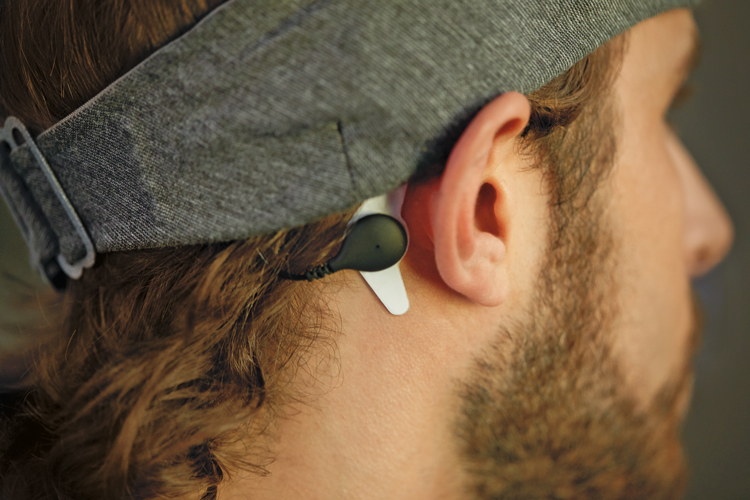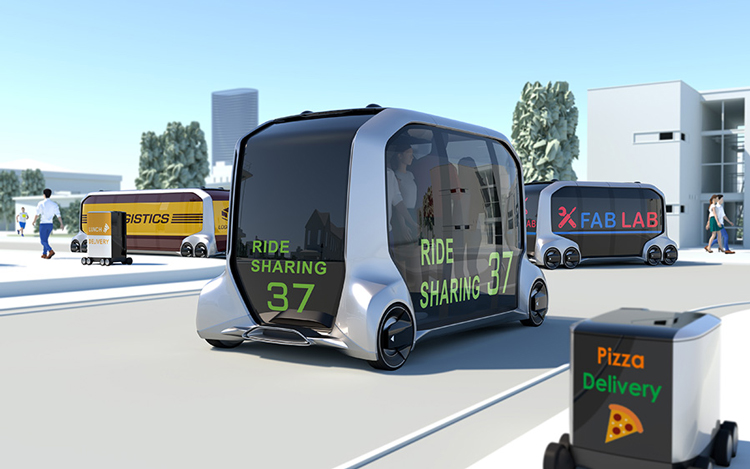CES 2018: top tech trends from this year’s show
A car that can read people’s brains, a friendly robotic dog and a sunburn-detecting smartphone app were just some of the launches at this year’s Consumer Electronics Show in Las Vegas.

Now in its 51st year, the annual Consumer Electronics Show (CES) took place in Las Vegas, US once again this week, bringing with it a host of launches from the digital, technology and product worlds.
Every year, it features nearly 4,000 exhibitors, 300 conference talks and sessions, and receives 170,000 visitors, making it the biggest tech show worldwide.
While the show is known for being on-the-pulse with the latest tech, this year sees a return to innovations we’ve seen plenty of in the last few years – from driverless cars to virtual and augmented reality and connected home products.
While this is nothing new, CES 2018 does show significant advancements in these areas with products that extend the capabilities of this tech. Smart products are being used increasingly to monitor health conditions, for example, and automated cars are becoming more commonplace.
Here’s our round-up of the biggest tech trends from this year’s exhibition and conference.
Smart health tech

Wearable fitness trackers used to monitor our steps, calorie intake, heart rate, sleep and the like have become commonplace in recent years, with the widespread use of wristbands like FitBit, plus phone apps like Sleep Cycle that can perform similar functions.
But this year, this has been taken a step further with products launched to monitor fitness more scrupulously, and also monitor specific diseases and health conditions, which could potentially prevent emergencies or the need to visit a doctor.
This includes UV Sense, a wearable ultraviolet light (UV) sensor, produced by L’Oréal and designed by Yves Behar. The sensor is a small, circular dot that a user sticks to their thumbnail and links up with a smartphone app, informing them when they are at risk of sunburn, with the aim of preventing skin cancer in the long-run. The project is a more advanced version of a UV skin patch launched by L’Oréal in 2016.

Another is Philips’ wearable headband SmartSleep, which aims to be a solution for those with a hectic lifestyle who get less than seven hours sleep a night. It produces sound tones that encourage the user to get a good night’s worth of “deep sleep”. Nokia revealed a similar product called Nokia Sleep; a tracking pad which slips under a mattress and analyses a user’s habits to provide advice on how to improve their sleep quality.
The health sector could significantly benefit from advancements in smart tech this year – but of course this also throws out ethical debates about the collection of personal data, and self-diagnosis and treatment rather than that by a medical professional.
Robots

Robotics was a popular theme again this year, with droids returning to clean people’s houses, connect up their smart home products or even act as a furry friend, with the launch of an updated version of Sony’s robotic dog Aibo.
However, CES has received criticism this year for producing a swathe of expensive, superficial products rather than using robotics to tackle the “problems they really need to solve”, according to Guardian journalist Olivia Solon.
Admittedly, while artificial intelligence (AI) advances with increasingly clever voice assistants that can complete complex tasks, the big brands seem obsessed with creating gimmicky, physical robots.
CLOi was originally launched last year, but this year LG has launched several new versions intended to act as waiters, cleaners and porters in places such as airports and hotels.
This year sees brands increasingly use hardware as a vehicle for intelligent software. We expect brands to continue playing with 1980s-style robot stereotypes in order to sell this sophisticated tech.
Cars – self-driving, electric, flying and more

The idea of self-driving cars has been around for years now, with the likes of Tesla, Dyson and Google proposing prototypes in the past.
This year’s CES 2018 sees more sophisticated versions of autonomous vehicles; Toyota announced the launch of its e-Palette Concept Vehicle, which would be an electric-powered, self-driving van that can be set for different purposes. For example, it could be used as a ride-sharing taxi, a mobile restaurant or hotel, or for deliveries.

Transport company Bell Helicopter also revealed its self-flying taxi concept in collaboration with taxi app Uber, with a demonstration showing how the concept could reduce commute time and congestion on the roads.

Then there was Nissan’s Brain-to-Vehicle (B2V) concept – not a driverless car, but a more ludicrous and far-fetched idea to enable vehicles to “interpret signals” from a human driver’s brain, with the aim of speeding up reaction times and adapting cars to make driving more enjoyable.
Driverless and smart cars are looking closer on the horizon for mainstream use following this year’s CES, where several car brands took the opportunity to out-do each other with new ideas.
Smart cities

Moving on from smart and connected products that reside within the privacy of people’s homes, there was a big focus this year on smart cities and integrating this tech into public spaces.
This includes Hubject’s Plug&Charge concept, an all-encompassing electric car charging system that aims to brings together existing, separate charging systems and make owning an electric car easier; Itron’s Smart Streetlights concept, which would be used to control streetlights and provide them with extra capabilities such as gas and water meter reading; and Cisco’s Connected City concept, which would provide residents and drivers with real-time information such as the number of vehicles on the roads and safety alerts.

The last year has seen a shift to smart tech being created for use on our streets, with concepts popping up such as urban design consultancy Umbrellium’s idea for a responsive pedestrian crossing that only appears when it is needed.
We’ll continue to see more nifty ways that smart tech can be used to enhance public spaces but once again the ethical debate around constant surveillance and the gathering of personal data could make consumers dubious of the overall benefits.
The logistics of rolling out a city-wide system will also prove far trickier with more ethical and infrastructure obstacles in the way, compared to someone’s personal decision to set up a connected home hub – but nevertheless, we’ll continue to see more smart concepts on the horizon.
What was your favourite launch at CES 2018? Let us know in the comments section below.
-
Post a comment




